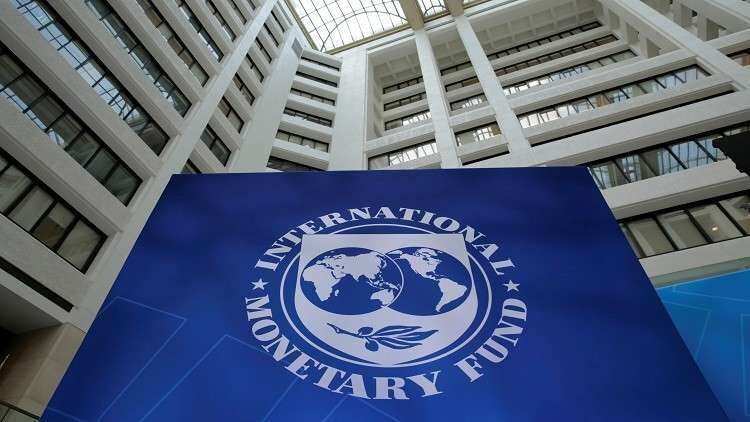Throughout 2023, the global economy has encountered an array of volatilities due to the war in Ukraine, inflation, rising international debt, the crisis in the Gaza Strip, and others. In October, the IMF published three annual reports: World Economic Outlook 2023, Regional Economic Outlook for the Middle East and Central Asia, and a special issue on Africa analyzing economic growth outlooks in 2024.
Egypt’s economic prospects in 2024 and beyond are closely linked to the global economy, with important trade relations with the United States, the EU, China, Russia, and the GCC. “Egyptian manufacturers … depend heavily on imported inputs whose costs have risen significantly, both due to global inflation and the now much weaker pound,” said Timothy Kaldas, the Deputy Director of the Tahrir Institute for Middle East Policy, in January.
Accordingly, anticipating what may happen in 2024 on global and regional levels in the Middle East and Africa will be necessary to forecast what may happen to Egypt’s economy in the coming 12 months.
Global outlook
Despite signs of resilience and efforts to recover from disruption in energy and food markets, economic activity is still generally falling short of projections. The 2023 IMF World Economic Outlook projects global growth to be 2.9% in 2024, compared to 3% in 2023.
The IMF expected world trade growth to decline from 5.1% in 2022 to 0.9% in 2023 before rising to 3.5% in 2024. “The projected decline in 2023 reflects not only the path of global demand but also shifts in its composition toward domestic services; lagging effects of dollar appreciation, which slows trade owing to the widespread invoicing of products in dollars; and rising trade barriers.”
There also were positive signs in terms of plummeting inflation. “Global headline inflation has more than halved, from its peak of 11.6% in the second quarter of 2022 to 5.3%.” The IMF report attributed the drop to a fall in food and, to a lesser extent, energy prices. “Crude oil prices have declined during 2023 and are well below their June 2022 peak, on the back of lower global demand partly driven by tighter global monetary policy.”
Curbs on oil production by OPEC are a sign prices will drop. The IMF report projected prices of fuel commodities to fall by 36% and oil prices by about 17%. That reflects a slowdown in economic activity and a decline in coal and natural gas prices after 2022 surges of 51% and 61%, respectively.
The outlook expects fiscal policy to ease in advanced economies while remaining neutral in emerging and developing economies with fiscal tightening expected to deepen in economies with high government debt levels.
The IMF global report noted that in 2023, emerging and developing economies “have seen even weaker recoveries, especially low-income countries, where output losses average more than 6.5%.” The slowdown has been due to higher interest rates and depreciated currencies.
Low investment rates accompany the slowdown seen across various regions. “Businesses have shown less enthusiasm for expansion and risk-taking,” particularly amid rising interest rates, withdrawal of fiscal support, low product demand, stricter lending conditions, and growing uncertainties.
The Middle East
With many developments happening worldwide, the IMF said the MENA region should build resilience in 2024. The outlook projects GDP will rise to 3.4% in 2024 for the Middle East and Central Asia after a decline from 5.6% in 2022 to 2% in 2023, reflecting improvement in overall economic conditions.
MENA mainly drove the economic slowdown in 2023, “reflecting oil production cuts, tight macroeconomic policies, and country-specific factors,” noted the IMF regional outlook.
The report added that recurrent shocks in the Middle East “have reduced policy space to support economic activity in many economies, and slow progress in implementing reforms is holding back investment, job creation, and inclusion while undermining resilience to shocks. Rising climate challenges are adding to the urgency of action.”
The Middle East’s decline is mainly due to dramatically slower growth in Saudi Arabia, from 8.7% in 2022 to 0.8% in 2023. “The downgrade … reflects announced production cuts, including unilateral cuts and those in line with an agreement through OPEC,” the report said.
Lower forecasts for 2023 in the Middle East also reflect cuts of nearly 20% to Sudan’s GDP growth rate forecast. The slowdown is attributed to the “outbreak of conflict, deteriorating domestic security, and the worsening humanitarian situation.” The report projects Sudan’s GDP will be 0.3% in 2024.
On the upside, the report said slowing inflation will ease pressure on central banks to raise interest rates. However, inflation will remain high in some countries, exacerbating food insecurity.
The report said ongoing moderation in commodity prices “should help alleviate pressures on food prices worldwide.” The IMF projected food prices to decline by 1.9% in 2024, following a 6.8% decline in 2023.
Africa
The IMF saw signs the African economy would gradually strengthen in 2024. The IMF African outlook titled “In Pursuit of Stronger Growth and Resilience” noted that a few of Africa’s large economies witnessed “a pickup in tourism, stronger-than-expected remittance inflows, improved agricultural output, and increased resource extraction.”
According to the report, the continent’s growth is set to strengthen to 3.8% in 2024, “supported in part by a modest easing of global financial conditions and reflecting a normalization of demand.”
The IMF report says private investment and consumption should grow enough to “lift growth in 2024 for about three-quarters of the region’s economies.” However, growth in non-resource countries [those that don’t rely on exporting oil or are not classified as natural-resource-intensive] in North Africa is expected to decline to 3.5% from 3.7% in 2023, mainly reflecting a slowdown in Egypt, the document noted.
The IMF said the continent should focus on macroeconomic stability. The report suggests that African nations “guard against any premature monetary policy easing and remain committed to their fiscal consolidation plans.”

Egypt
The IMF’s Egypt report said the country faced unprecedented implications of foreign currency rationing and import restrictions in 2023, reflecting deteriorating macroeconomic conditions.
That is despite export growth rates outpacing those of imports in 2023. In December, CAPMAS said Egypt’s imports increased by nearly 8% in 2022, reaching $96.2 billion. On the flip side, exports surged 19.4% in 2022 to $52.1 billion, with petroleum exports increasing by 50.1%.
In October, the IMF updated forecasts for Egypt’s GDP growth to 4.2% in 2023 and 3.6% in 2024. That compares with the government’s December revised forecast, which went from 4.2% growth in 2024 to 3.5%. “This forecast may increase a little or decrease a little depending on the impact of the war on our borders,” Hala El Said, the Minister of Planning, told international media.
The IMF report on Egypt projected the annualized inflation rate would reach 32.2% in 2024. That is mainly due to the projected devaluation of the pound, which some pundits in December 2023 expected could reach EGP 40, if not EGP 45, to the dollar. That is still short of the average black market rate registered in 2023, which is over EGP 50 to the greenback.
The country report added that as a highly indebted country, Egypt would continue to face deteriorating external funding conditions in 2024. That resulted in foreign-currency sovereign bonds substantially expanding in Egypt and other vulnerable emerging markets and middle-income countries.
“While sovereign spreads have generally narrowed since last March’s financial turmoil, as of August, they remain at distressed levels (more than 1,000 basis points) for Egypt, Pakistan, and Tunisia,” says the report.
In 2024, Egypt, among other nations, will face significant external financing needs, with only enough reserves to cover about 70% of short-term external debt.
Common Challenges
Climate-related shocks are one of the biggest challenges in the Middle East and Africa. It could result in worsening drought conditions in places whose economies have long depended on rain, as flash floods hit other dry regions with little to no infrastructure to deal with rain downpours.
The IMF global report stressed that global warming will significantly impact “infrastructure, agricultural output, and food prices.”
The IMF’s regional report notes that “effective climate change adaptation requires including climate risks and policies in all relevant policy frameworks and structural reform agendas, adopting measures that help boost climate resilience and infrastructure investments.”
Regional economic growth will also be affected by lower production in oil-exporting countries. However, decisions by those oil-exporting nations will not be solely financial, as geopolitical tensions in MENA and Southern Europe, plus each of those countries’ economic agendas, will influence decisions to raise or cut oil production to reduce or increase prices.
Those decisions will invariably impact how governments in emerging markets and middle-income countries, such as Egypt, manage their monetary policies to curb inflation without hurting economic recovery potential.
Additionally, country-specific factors such as currency devaluation and import restrictions add to the urgency of action to alleviate inflation across the region.
Implications of the war in Ukraine will further pressure food, fuel, and fertilizer prices, posing the risk of “worsening food insecurity, with the potential differential effect on inflation across countries determined by their import or export dependence,” the IMF report highlighted.

Near-term policies
The IMF World Economic Outlook suggests policies to maintain growth in those uniquely challenging times. Central banks should adopt a restrictive stance in economies where high inflation persists “until clear signs emerge that underlying inflation is durably cooling,” said the report.
Government spending cuts or tax increases can also achieve price stability to ensure public debt sustainability. Reducing aggregate demand would further ease inflation. “Tilting government spending toward items more supportive of demand, such as targeted household transfers, may be necessary” in economies where inflation is below targets.
Weather conditions – heat waves, floods, and wildfires – accompanied by other factors, such as the war in Ukraine, are exacerbating risks to the global supply of staple crops. Hence, the global report suggested lifting bans on food exports “to safeguard the global flow of food supplies” and improve food security.






